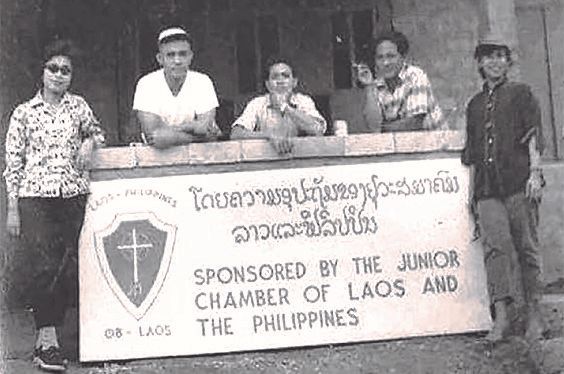Medical mission on the Mekong River in Laos
It was the early 1960s and the place was the Kingdom of Laos, less than five years after independence as a former French colony. Its impoverished 2 million inhabitants live mainly on subsistence agriculture, surrounded by densely forested mountains. Passable roads are almost non-existent. But there is a great waterway called the Mekong (Mother River), which flows from the Tibetan plateau in China, through the southern delta of Vietnam, and into the South China Sea. Three-quarters of its 2,700-mile length meanders through Laos.

video link
For generations of Laos, it provided food and served as its main line of transportation. Laos is a young country whose growth has been hampered by poverty and civil war, and the most basic medical services in Laos rarely reach remote villages. But since many Lao people live along the river and its tributaries, a floating clinic can visit them. So the Mutya Ng MeKong, a barge laden with medical supplies with a Laotian crew and Filipino nurses and doctors, braved the river's turbulent waters on a medical mission, as we announced in August 2020. Described in a Mekong Newsletter . The video reprints the cover of this issue, then skips to pages 6 to 7 for details on the assignment.
It was an epic journey that took several weeks. This video highlights the visit, the ceremony reception and the cultural performance - singing of the bamboo reed flute "mohlam". This particular mission was led by Filipino physician Rodolfo Bacani Arreola. Born on November 4, 1930, he received his medical degree from the University of Santo Tomas in Manila in 1956. His wife, Felicima Parry, was an elementary school teacher who later earned a master's degree in education and taught at the National Teachers College.
One of their three children, Maria Theresa "Marites" Oteyza (nicknamed "Marits") recalled: "I was about four when my father went to Laos. My mother told us that he went to Laos, came home, and came back sick. I remember him coming home in the first week of September 1960, hospitalized at St. Luke's Hospital, and having an open and closed exploratory laparotomy. Doctors found that the cancer had spread throughout his body. He died on October 1, 1960. My mom said he wanted to serve people in Laos who don't have good medical care. 』
After Mrs Areola's death on January 11, 2010, her son Arnold found the pictures in the videos among her belongings. Arnold, 62, is a retired postmaster living in Las Vegas, Nevada, USA. Brother Rodolfo Jr., 65, works for a security company in Las Vegas. Maritz, 67, is a retired registered nurse in Vallejo, California. Together, they created the video to pay tribute to their late father. When he died, they were too young to fully remember him, and they reached out to members of the Mekong Circle to find out more about him and his service in Laos. The images of thatched huts and barefoot children in the village 60 years ago are haunting, like a memory slipping through the eternity of living by the river in Laos. Those missions ended when Filipino volunteers left Laos in 1975 after 18 years of sojourn. He was one of more than 100 Filipino doctors who participated in a medical assistance program called Operation Brotherhood (OB) during this period.
In the video, Maritz contacts the nurses who sailed with Dr. Areola on the "Madame Mekong", including Pet Duruin Sismaet (in the Philippines) and Raquel Tolentino (in California, USA).
Note: After the video link opens, click the circle in the lower left corner to start the video timeline. Maritz gives the opening remarks.
Like my work? Don't forget to support and clap, let me know that you are with me on the road of creation. Keep this enthusiasm together!

- Author
- More